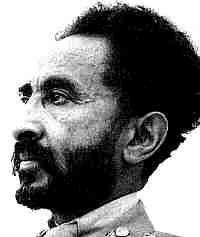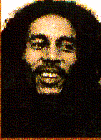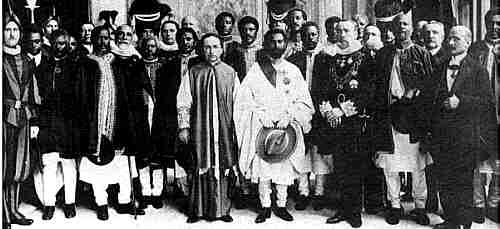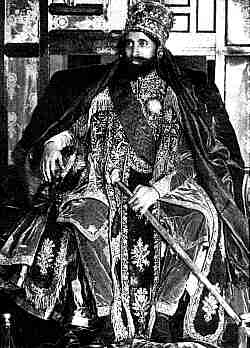Ethiopian & Rastafari
by Aster Sellassie, Millennium Ed.

eFood: CookBook!
Mailing List Interview with Alexey-Tafari

GeoAlaska: Theatre & Film
 (c)2004 HIM contents (summary of the HS web-biography) *
(c)2004 HIM contents (summary of the HS web-biography) *
Your Free Email in Your Name and Your Language
Join -- Get on Sellassie Mailing List (business)!
Summary
Soul Rebels: The Rastafari Buy from Amazon.com . . . a cult, a deviant subculture, a revolutionary movement . . . these descriptions have been commonly used in the past to identify the Rastafari, a group perhaps best known to North American readers for their gift of reggae music to the world. With both compassion and a sharp sense of reality, anthropologist William Lewis suggests alternative perspectives and reviews existing social theories as he reports on the diverse world of the ganga- smoking Rastafari culture. He carefully examines this culture in its confrontations with the law, its growing ambivalence about itself as well as the continued conflict between many Rasta and contemporary middle-class values. Characterized by rich ethnographic detail, an engaging writing style, and thoughtful commentary, Soul Rebels uncovers the complex inner workings of the Rasta movement and offers a critical analysis of the meaning of Rastafari commitment and struggles. Soul Rebels offers a solid historical overview of the movement, an excellent picture of diversity within the faith, fair and accurate discussions of sexism among the Rasta, engaging life history material, and rich descriptions of what actually goes on in a "reasoning" session. Lewis's treatment of Rastafari populations in a Jamaican fishing village, an Ethiopian market town, and an urban neighborhood in the northeastern United States sets his ethnography in the crosscultural and comparative framework central to anthropological analysis. [an error occurred while processing this directive] William David Spencer’s Dread Jesus (London: Society for Promoting Christian Knowledge, 1999) is, quite simply, one of the best books by a Christian theologian about a new religious movement. Although Spencer examines primarily different views of Jesus Christ within the Rastafari community, the book is also a comprehensive history of the movement, of its sources, and of the differences between its many contemporary branches. It is also a valuable introduction to reggae music and its connections with the Rastafari community.Questions
From Babylon to Rastafari: Origin and History of the Rastafarian Movement Buy from Amazon.com A splendid piece of work written on a remarkable, dynamic and indigenous movement by one of its ardent followers. In this book, Mack unfolds the one true binding tenet of the Rastafari concept."An Ethiopian Boyhood" amazon.com
Notes
Rastafari: From Outcasts to Culture Bearers Buy from Amazon.com Rastafari. The word immediately conjures a host of strong, disparate images. To some, the Rastafarian Movement, which emerged from the ghettoes of Jamaica in the 1930s, is embodied by a dreadlocked youth in a haze of marijuana smoke. To others, it represents an authentic, organic expression of working-class culture, a vibrant movement that has expanded to North America, the British Isles, and Africa. Ennis Barrington Edmonds moves beyond simple stereotypes to provide a compelling portrait of the Rastafarian phenomenon and chronicle how a once-obscure group, much maligned and persecuted as an internal threat to Jamaican society, became an international cultural force. He focuses in particular on the internal development of Rastafarianism as a social movement to track the process of this strikingly successful integration. He also demonstrates how African and Afro-Christian religions, Ethiopianism, and Garveyism were all fused into the Rastafari posture of resistance, organized as it is around charismatic figures. Rastafari presents an intimate account of a unique movement, which over the course of several decades institutionalized itself to become the international cultural, political, and musical force it is today.* Ethiopian Berbere
* Green (Unroasted) Coffee -- Ethiopian Yirgacheffe -- Whole Bean Coffee for home roasting. 1 Lb. bag
* Decaf Ethiopian Yirgacheffe Whole Bean
* Map of Ethiopia
* poster

2004 & After
Ethiopian Books
 Liberty is always unfinished business. --anonymous
Liberty is always unfinished business. --anonymous

"Since its founding the Rastafari movement has gone through three distinct phases of growth. The first phase lasted through the 1930s and most of the 1940s. Theologically , the main impetus was given to propagating the idea of a Black God among a people whose image of God was of a bearded White father in the sky and of a White man on a cross. (page 11)
The second phase began among second-generation converts who entered the movement in the 1940s but who were in revolt against practices they thought were compromising. The innovations and practices they instituted were to become the hallmarks of the new image of the Rastafari: dreadlocks, ganja-smoking, Rasta talk ... (Barry Chevannes, Chapter 1, Introducing the Native Religions of Jamaica, page 12)
For the majority of Rastafari members rituals are of two kinds; reasonings and the `binghi', both sometimes referred to as a `grounding' or a `grounation', from which has come the verb `to grounds', meaning to get along well. The reasoning is an informal gathering at which a small group of brethren share in the smoking of the holy weed, ganja, and in a lofty discussion. As the brethren sit around in a circle, the host cuts up the ganja, mixing into it a small quantity of tobacco from a cigarette. The matter is stuffed into the chillum of a water pipe (called a `huka' by the East Indians), from whom the whole ganja complex was borrowed, but called a chalice or cup by the Rastafari, who compare it to the sacred communion of the Christians. He whose honor it is to light the pipe, or chalice, pauses and recites a short prayer before, while all participants bare their heads. Once lit, the chalice is moved counter-clockwise around the circle, until all have `supped'. Reasoning ends, not formally, but when the participants one by one don their tams or caps and depart. (Barry Chevannes, Chapter 2, New Approach to Rastafari, page 17)
As ganja trading and smoking came in for increased suppression by the police, some Rastafari groups tried to restrict its use. Hinds, for example, had strict rules, which forbade bringing it into his Mission, let alone using it there, while allowing members the private use of it. Youth Black Faith, however, decided on a different course. Seizing on the name herbs, and reasoning that it had divine sanction, so that Government's attempt to suppress it was tantamount to an attempt to suppress the people, the Warriors and the Dreadfuls led the House into adopting ganja as an integral part of their movement, Wato explains:
We don't count ganja as a criminal offence. We show the policemen at all times that we rather if you destroy us. For God says, `The evil things 'pon this earth is the hand-made things'. These are the things that brought up falsehood 'pon the people, those is the things that destroy the people. So this is not the things that hand-made, this is God's natural creation, and it always virtuous to show the man the Bible and Revelation 22: `The herbs that bear the various fruits, the leaf of it shall be the healing of the nation'. And in Psalm 104 him says; `All the herbs that bearing seeds upon the land is made for man'. So this is the chief argument we always confront them whenever we have an attack by the police.
And to make sure that their use of ganja was explicitly religious, Wato said that the Youth Black Faith instructed members of the House not to carry it on their person, so that police action could be targeted not at the individual but at the whole assembly of the faithful:
If the policeman intervene in our congregation, him couldn't find no other charge. The Father say: `When they persecute you fi other things it is not; but when them persecute you fi the word, I Jehovah God is with you'.
Thus they did not try to hide ganja or hide their use of it. But by giving it ritual sanction they were in effect expressing their contempt for the state and society. (Barry Chevannes, Chapter 4, The Origin of the Dreadlocks, pages 85-86)"
* "Ethiopia" -- new music from Addis (Teowdros Abera, Tikher Teferra)! (winamp 4.46 min) download free * info




 Read about Sellassie'2000 -- Reggae WWW Benefit Concert for children of Ethiopia "Children of Jah"!
Read about Sellassie'2000 -- Reggae WWW Benefit Concert for children of Ethiopia "Children of Jah"!



 Video: Click to View or Add Links.
Video: Click to View or Add Links. 





